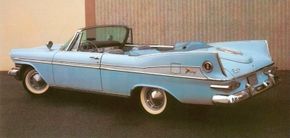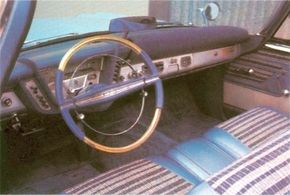Detroit has long played name games of the type used on the 1959 Plymouth Sport Fury, and often to the great confusion of car buyers. Thus have the automakers trotted out all-new models with old handles, to cash in on past glories, or created new titles to make old cars seem new.
Classic Cars Image Gallery
Advertisement
In the 1950s, the industry hit upon a variation that's still in widespread use. Its called the "trickle-down game." A new name appears on a top-end model or series, then filters to the bottom of the line via elimination of older and/or lower-status names. History is full of examples: Bel Air and Impala at Chevrolet, Fairlane and Galaxie at Ford.
Chrysler Corporation is a past master at the sport, and it added an interesting twist with Plymouth's 1959 Sport Fury. The Fury began as a speedy, limited-edition 1956 hardtop, and continued as such for the next two years.
Though never a big seller, it cast a performance image over the entire Plymouth line with obvious sales implications, and division marketers just couldn't resist trying to capitalize on it.
Accordingly, they put the Fury label on all top-of-the-line 1959 Plymouths except Suburban wagons, removed Plaza nameplates from low-end models, and pushed Belvedere and Savoy down a notch. The only problem this created was what to call the limited edition. Well, the 1956-1958 Fury had definitely been sporty, so why not name its 1959 successor Sport Fury? That they did.
And for the first time they offered their hottest car as a convertible as well as the customary hardtop coupe. Curiously, though, the new standard Fury line didn't list a ragtop, just a pair of hardtops and a four-door sedan.
For all the name shuffling, the 1959 Furys, standard and Sport, were far less "limited" than the high-powered stormers of 1956-1958. Where the latter had seen only 4,500-7,500 copies a year, the Sport Fury ran close to 24,000 units all by itself, and standard Fury reached nearly 65,000.
Of course, this was just what the sales department wanted, and it helped Plymouth hold onto third place in recovery 1959 despite total volume that rose by only 15,000 units -- while Chevrolet gained more than 300,000 units, Ford nearly half a million.
To learn about styling and flashy options for the 1959 Sport Fury, continue to the next page.
For more information on cars, see:
- Classic Cars
- Muscle Cars
- Sports Cars
- Consumer Guide New Car Search
- Consumer Guide Used Car Search
Advertisement


